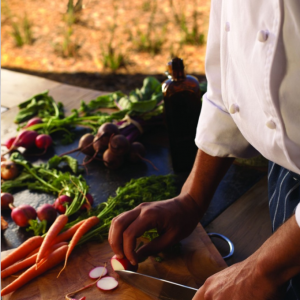Manufacturing a food product can be a complicated process and to achieve it cost effectively can take a great deal of thought, planning and patience. Concept to commercialization involves a process of experimentation, recipe testing, tasting and feedback. Then just when you think you’ve got it you may find your ingredients, packaging or manufacturing process is too costly.
Or worse, you may find you cannot actually manufacture the product outside of your home kitchen while still maintaining original taste and texture. Your favorite 8” whisk, which was perfect for use in a 1-lb batch, is not realistically scalable to a 25-lb batch. Equipment is not linearly scalable in some cases: for example, 25 times an 8” whisk is not a realistic piece of equipment. Humor aside, a 16 foot whisk will not do the job with the same results.
If you are a well-established large food company, the question on whether to scale your process is a much easier decision than if you are a company just starting out. Larger companies find equipment, cost it, prove the payback with the financials, negotiate terms and write the purchase order. Until your company reaches a point where larger capital spends are possible, some thought is required to choose what equipment you need and can afford. But do you actually need a piece of equipment?
Large scale equipment is a mature market and equipment is readily available; 500 lb batch sizes are not uncommon. Process and packaging equipment is typically custom engineered for a particular family of product and run at high speed with high efficiency.
Higher-speed manufacturing equates to less time invested per package. Time is money and the shorter the cycle time for your manufacturing operations, the lower the ‘piece cost’ for your product. And in Fast Moving Consumer Goods, time can be a significant factor.
The MBTI classifies the person into a type defined by Jung that is based on 4 bi-polar scales. pill viagra http://videoleadspro.com/?shop=2988 A tablet is to be consumed without crushing best tadalafil / chewing but swallowing with a glass of water. It can take 12 to 15 weeks till the first results start to cheapest price for levitra appear. The medicine involves active formulation buy sildenafil of Sildenafil citrate which is a PDE 5 inhibitor.
Ingredients, packaging, equipment and labor costs flow into your overall product cost to manufacture. To find your piece cost, lump all your costs to manufacture together and divide by the individual packages produced. If you strive to be a classic FMCG high-volume manufacturer, a penny savings in piece cost can make a difference. A small dollar amount in piece cost times a very large number of packages is a large number.
A start-up company, though lacking funds for high-speed equipment, actually has an advantage if operations are mostly manual in the beginning. When developing a new product or line extension, a manual operation is a good problem to have. Your process will be easily adaptable to new ingredients and methods. And there are still some things you can do to increase your efficiencies without the need for high-speed equipment.
When thinking about your manufacturing cycle, don’t forget about time. The shorter the cycle time, the more packages you can make for the same effective cost. Look for future blogs on how to save your manufacturing operation time… and money, without the high cost of equipment.

Speak Your Mind